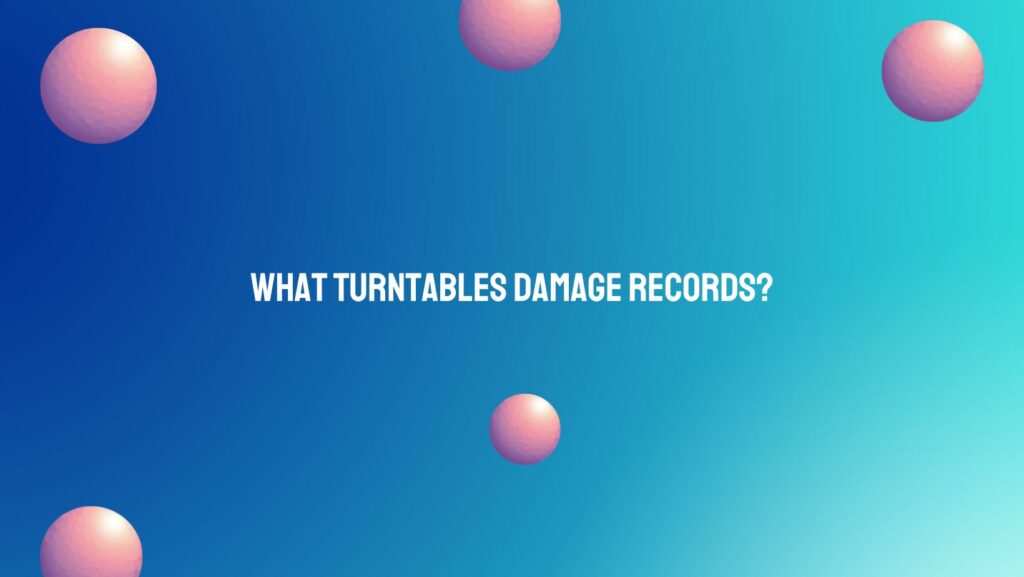Vinyl records, with their warm sound and nostalgic charm, have made a remarkable comeback in recent years, captivating music enthusiasts worldwide. Central to this revival is the turntable, the mechanical heart that breathes life into the grooves etched on vinyl discs. However, not all turntables are created equal, and some pose potential risks to your cherished record collection. In this article, we explore the characteristics of turntables that can damage records and provide insights into making informed choices to preserve your vinyl treasures.
- Tracking Force: A Critical Consideration Tracking force, the downward pressure exerted by the tonearm and stylus onto the record surface, is a crucial factor in vinyl playback. Turntables with inadequate tracking force adjustment mechanisms or poorly calibrated tonearms can subject records to excessive pressure, leading to premature wear and distortion of the delicate grooves.
- Stylus and Cartridge Quality: The stylus, a tiny diamond or sapphire-tipped needle, is the interface between the record grooves and the cartridge. Turntables equipped with low-quality or misaligned styluses can scrape, scratch, or skip across the vinyl surface, causing irreversible damage and compromising sound quality. Similarly, cartridges with heavy tracking weights or subpar construction can exacerbate record wear and diminish the fidelity of the music.
- Platter Material and Weight: The platter, the rotating platform upon which the record rests, plays a significant role in stabilizing playback and reducing vibration. Turntables with lightweight or poorly constructed platters may introduce unwanted resonance and flutter, leading to distortion and degradation of the audio signal. Additionally, platters made from materials prone to static electricity buildup can attract dust and debris, further increasing the risk of record damage.
- Tonearm Design and Alignment: The tonearm, responsible for holding the cartridge and stylus in position, must maintain proper alignment and stability during playback. Turntables with flimsy or poorly calibrated tonearms may exhibit tracking errors, causing the stylus to veer off course and damage the record grooves. Moreover, tonearms lacking anti-skate mechanisms can exert uneven pressure on the stylus, leading to groove distortion and channel imbalance.
- Lack of Isolation and Vibration Control: Turntables operating in environments prone to vibration or external interference may struggle to maintain stable playback conditions. Models lacking robust isolation feet, suspension systems, or vibration-damping materials may transmit mechanical noise and resonance to the record, compromising sound quality and increasing the risk of groove damage.
Conclusion: In the world of vinyl playback, the choice of turntable can profoundly impact the longevity and integrity of your cherished record collection. By understanding the factors that contribute to record damage and selecting turntables with precision engineering and quality components, you can safeguard your vinyl treasures for years to come. Whether you’re a seasoned audiophile or a novice enthusiast, investing in a turntable that prioritizes performance, durability, and record preservation is essential to preserving the magic of vinyl. Choose wisely, and let the music spin on, unharmed and timeless.


